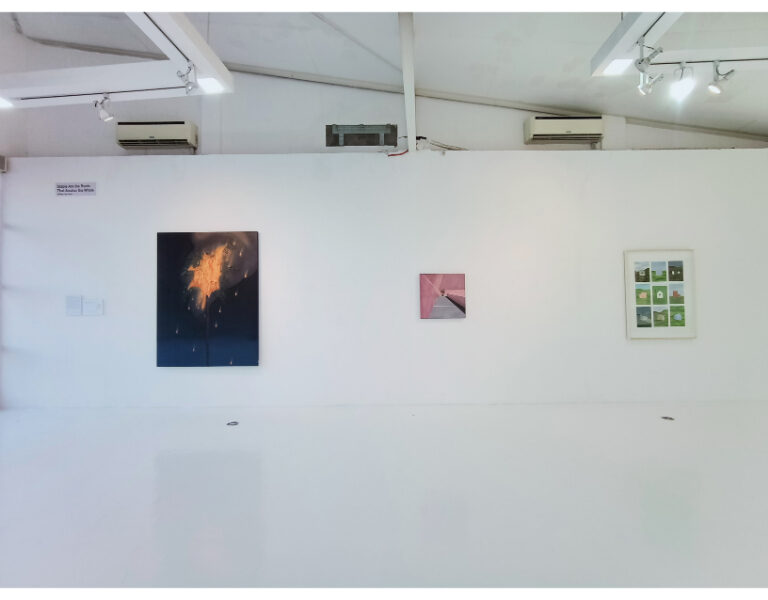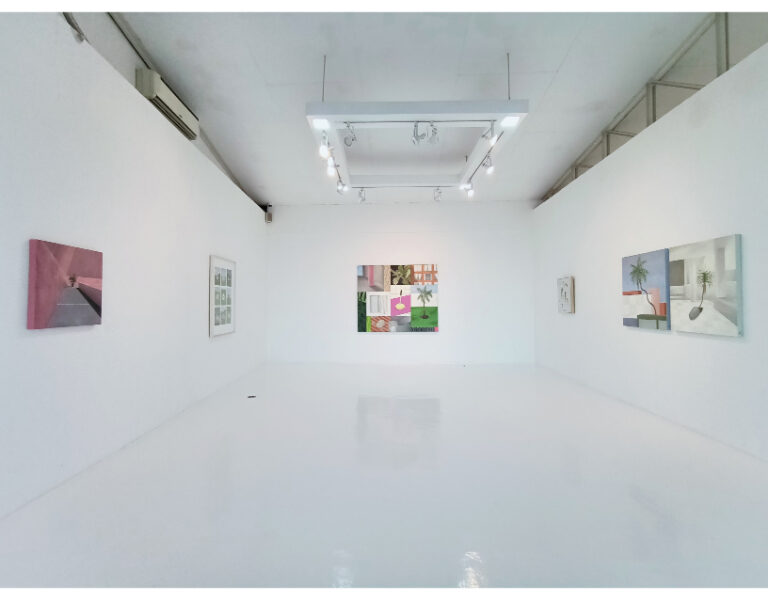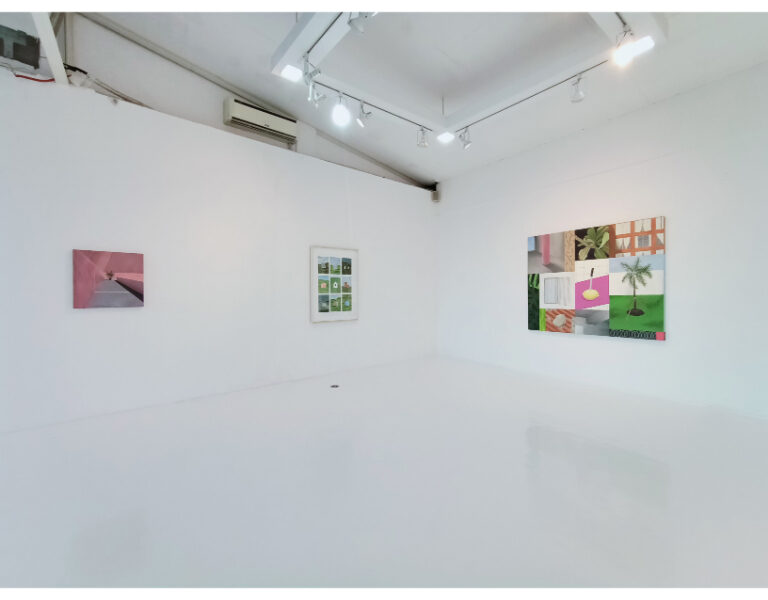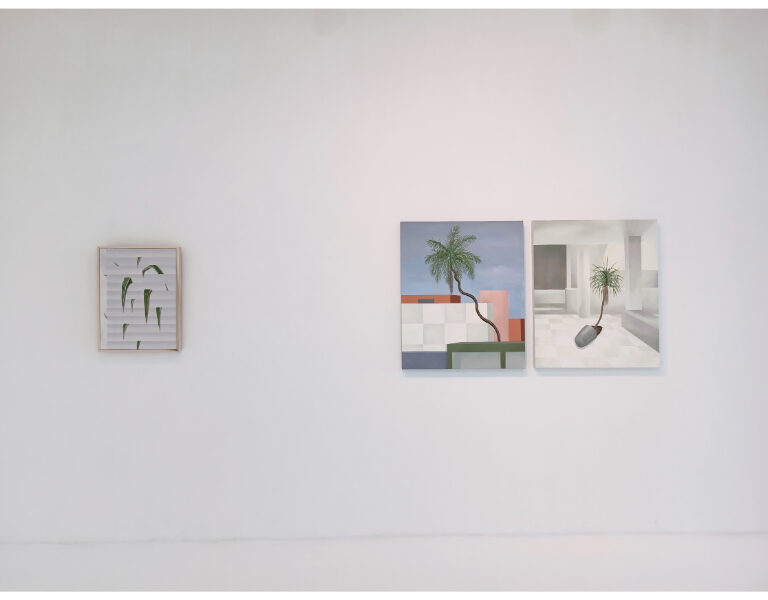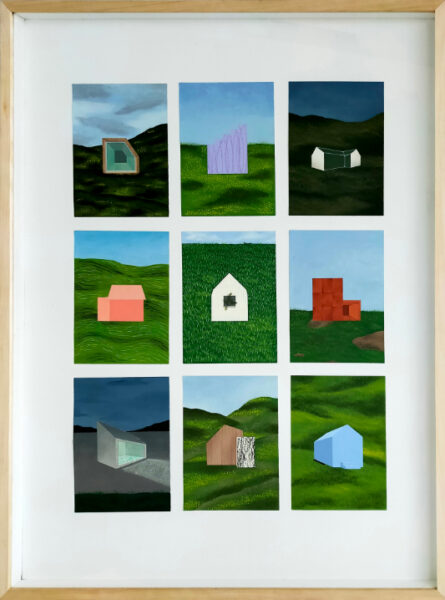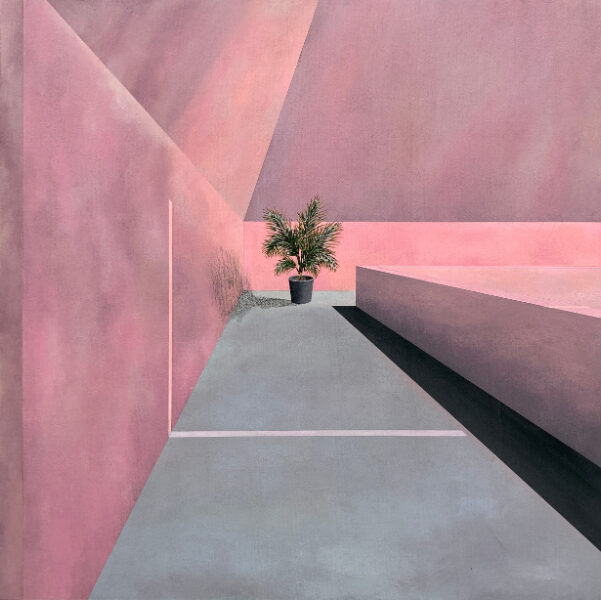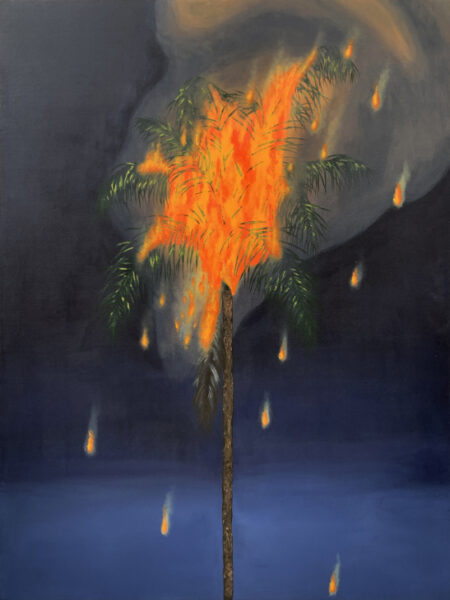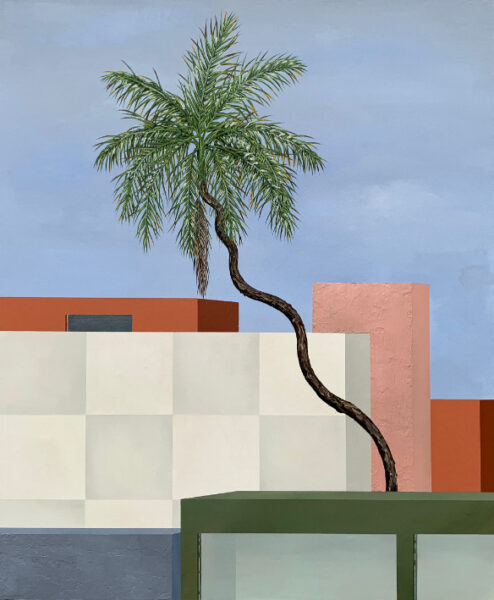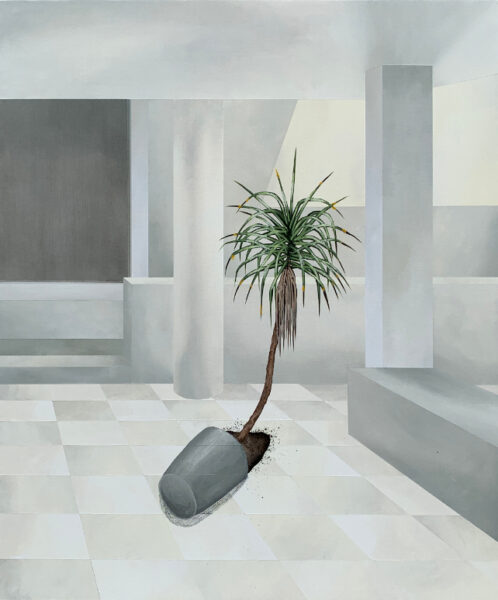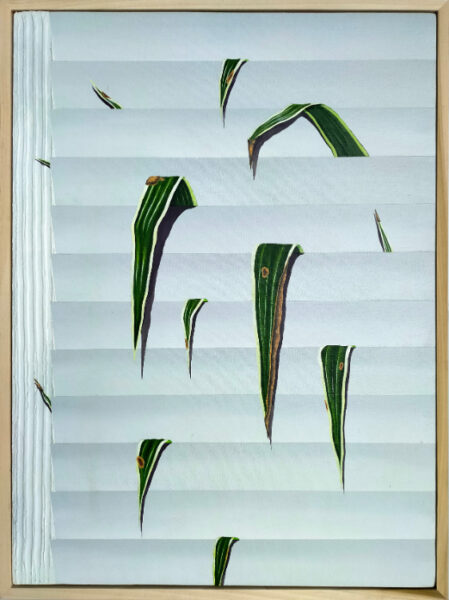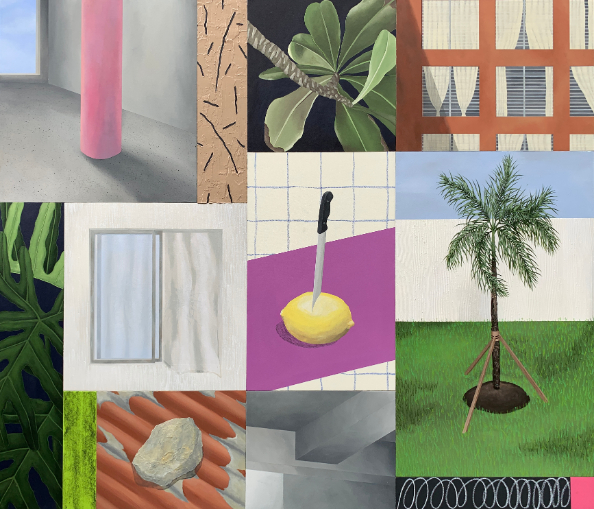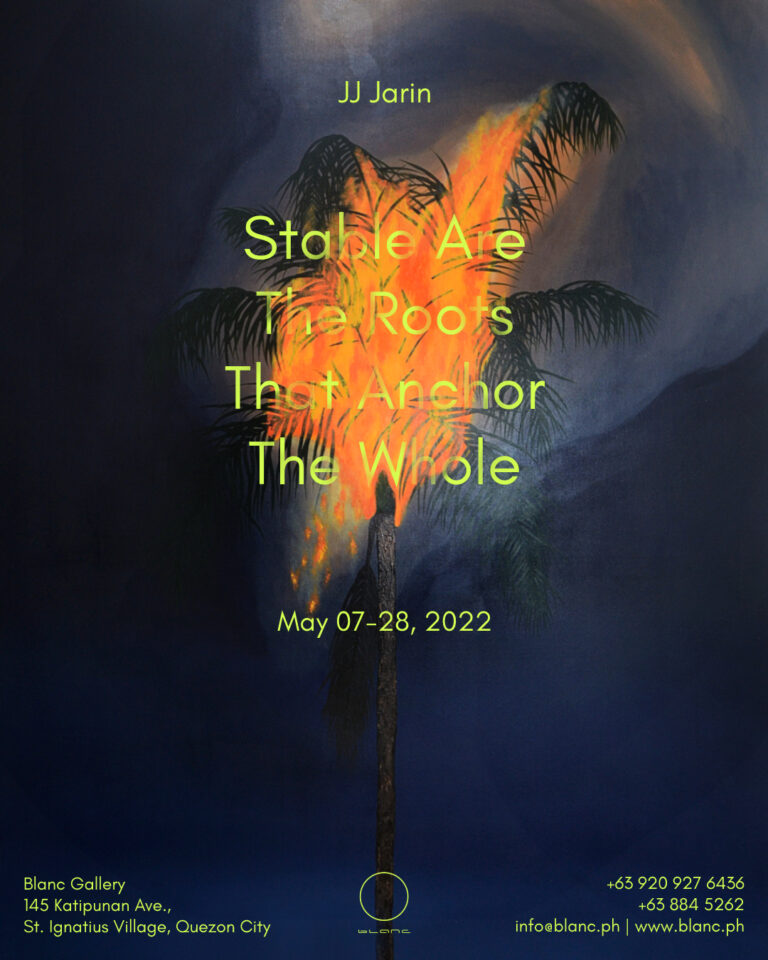
STABLE ARE THE ROOTS THAT ANCHOR THE WHOLE
In 1982, Joseph Beuys explained the importance of the tree as a symbol and its relationship to time and nature through his influential project 7000 Oaks and said that the “tree is an element of regeneration, which in itself is a concept of time.” Thus, Jeffrey Jay Jarin’s study and observation of life forms continue with “Stable are the Roots That Anchor The Whole” where the exhibition points to trees in narrating human experiences and emotions as one navigates through a plethora of complications and struggles.
The exhibition begins with a grandstanding image of a burning palm tree as the irony of beauty confronts one in times of destruction. However, this image summarizes Jarin’s conclusion in the understanding of humanity in times of trouble: what anchors us is the adaptability of life and its open-endedness. The artist likens our situation to trees —and in the ability to survive, one must hold on to its roots. Hence, the image of a palm tree engulfed in flames and spitting embers is quite representative of the mind and body immersed in stressful circumstances and unable to hold ground; like battling these fires, reconciling with the toll of emotional brawls can sometimes become forceful and brute.
Part of Jarin’s research into palm trees is looking into ways of preventing fires. This includes the understanding of combustibility, which the artist likens to the notion of burnout —a state of extreme physical or mental fatigue. In essence, when the body undergoes this condition, it doesn’t slow down and instead burns and explodes from within.
However, the exhibition also explores the strength of palm trees because of their monocot characteristics and scattered vascular bundles, which allow them to survive typhoons, strong winds, and other natural disasters. As the tree recovers, it accommodates its new growth from the point of damage, often bending at the affected area as it begins to grow again. At times, trees bend not because of climate intervention but because of phototropism, a process where a tree searches for the best place to grow and slopes towards the direction of light.
The series of drawings and paintings in Jarin’s “Stable are the Roots That Anchor The Whole” unfolds revelations on the self and in the environment we live in as we ponder on the path of growth by tracing our roots. In his work, “Not All Homes Are Shelters, Not All Shelters Are Homes”, Jarin assesses the two forms of reality that influence growth: the perpetual search for triumph in familiar places and sites, and in finding such progress in unpredictable and unexpected situations. This realization confounds and enlightens the artist and resolves to cling to the roots and anchor the whole.
Gwen Bautista
Works
Documentation
